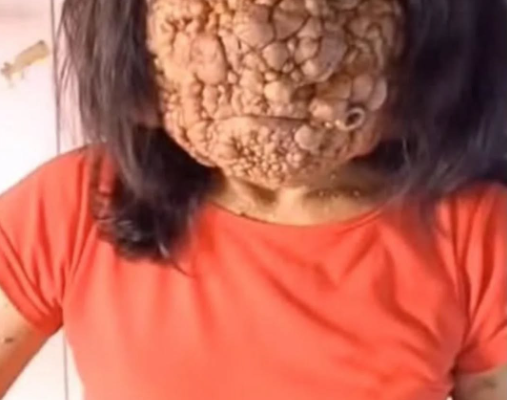Acne occurs when hair follicles become clogged with oil, dead skin cells, and sometimes bacteria. It’s one of the most common skin conditions in the world, affecting people of all ages, though it’s most prevalent during adolescence. While often dismissed as a “teen problem,” acne can persist into adulthood, and for some people, it first appears later in life. Understanding why it happens, what factors influence it, and how it can be treated is the first step toward healthier skin and greater confidence.
To understand acne, it’s important to know a little about the skin’s structure. Hair follicles are tiny openings in the skin where each strand of hair begins. Attached to these follicles are sebaceous glands, which produce sebum—an oily substance that lubricates skin and hair. Normally, sebum moves up the hair shaft and out through the skin’s surface, mixing with sweat to form a thin protective film. But when the body produces too much sebum or the skin’s natural shedding process becomes irregular, dead skin cells and oil can combine to form a plug in the follicle. This plug creates the perfect environment for bacteria—particularly Cutibacterium acnes—to multiply, leading to inflammation and visible breakouts.
Acne doesn’t always look the same. Dermatologists often classify it into several types. Blackheads and whiteheads, known as comedones, are non-inflammatory forms of acne. Blackheads occur when a clogged pore remains open and the surface darkens due to oxidation, not dirt. Whiteheads occur when the clogged pore closes, creating a small, flesh-colored bump. Inflammatory acne is more severe and includes papules (small red bumps), pustules (red bumps with white or yellow pus-filled tips), nodules (large, painful lumps beneath the skin), and cysts (deep, pus-filled lesions that can lead to scarring). The severity and type of acne can determine the most effective treatment approach.
Several factors can trigger or worsen acne. Hormonal changes play a significant role—especially during puberty, menstruation, pregnancy, and menopause—because hormones can stimulate the sebaceous glands to produce more oil. Genetics also influence acne; if your parents struggled with it, you might be more prone. Diet has been studied extensively, with evidence suggesting that high-glycemic foods (like sugary snacks and white bread) and certain dairy products may worsen breakouts for some people. Stress doesn’t directly cause acne, but it can worsen it by affecting hormone levels and inflammatory responses. Environmental factors, such as pollution and humidity, can contribute by clogging pores or irritating skin. Even skin and hair products labeled “oil-free” can sometimes cause breakouts if they contain pore-clogging ingredients—this is why dermatologists recommend non-comedogenic products.
One misconception about acne is that it’s caused by poor hygiene. In reality, over-washing or scrubbing too harshly can make acne worse by irritating the skin and stripping away protective oils, prompting the sebaceous glands to produce even more oil. Gentle cleansing twice a day with a mild, pH-balanced cleanser is usually sufficient. Another myth is that you should “dry out” acne at all costs; while some drying agents help reduce excess oil, overuse can cause redness, flaking, and irritation, making acne harder to treat.
Treatment options depend on severity. For mild acne, over-the-counter products containing benzoyl peroxide, salicylic acid, or alpha-hydroxy acids can be effective. Benzoyl peroxide kills acne-causing bacteria and reduces inflammation, while salicylic acid helps unclog pores by exfoliating dead skin cells. For more persistent or moderate acne, topical retinoids—vitamin A derivatives such as adapalene or tretinoin—can speed up cell turnover and prevent clogged pores. These may cause some initial irritation, but with consistent use, they can produce significant improvement.
For severe acne, dermatologists may prescribe oral medications. Antibiotics can reduce inflammation and bacterial growth but are typically used for limited periods to prevent resistance. Hormonal treatments like oral contraceptives or anti-androgen drugs (such as spironolactone) can help women whose acne is linked to hormonal fluctuations. In the most stubborn cases, isotretinoin—formerly known as Accutane—may be recommended. This powerful medication can produce long-lasting remission, but it requires close medical supervision due to potential side effects.
Skincare routines for acne-prone skin should focus on balance—reducing excess oil and unclogging pores without stripping or irritating the skin. Sunscreen is essential, even for oily or acne-prone skin, because many acne treatments make the skin more sensitive to UV rays. Lightweight, oil-free, non-comedogenic sunscreens are available in gel or fluid textures that won’t clog pores. Moisturizers are also important, as dehydrated skin can become inflamed and produce more oil to compensate. Choosing a gentle, fragrance-free moisturizer can help maintain skin barrier health while treating acne.
Lifestyle changes can support treatment efforts. Managing stress through meditation, exercise, or hobbies can help keep hormone levels more stable. Staying hydrated aids in overall skin health. While diet’s role in acne is still debated, reducing sugar and processed foods and focusing on whole foods like vegetables, lean proteins, and healthy fats may help some individuals notice fewer breakouts. Keeping pillowcases, makeup brushes, and phone screens clean can minimize exposure to pore-clogging debris.
Acne can have emotional effects as well as physical ones. Studies show that people with acne often experience lower self-esteem, social anxiety, and even depression. This can be particularly challenging for teenagers, who may already feel self-conscious about their appearance. Support from family, friends, and healthcare providers can make a difference. If acne is affecting your mental well-being, it’s worth discussing with both a dermatologist and a counselor or therapist, as addressing the emotional impact is just as important as treating the skin.
Patience is key in acne management. Most treatments take at least six to eight weeks to show noticeable results, and consistency is essential. Switching products too quickly or using multiple harsh treatments at once can backfire. A dermatologist can help create a personalized plan based on skin type, acne severity, and lifestyle factors.
In summary, acne happens when hair follicles become clogged with oil and dead skin cells, creating a breeding ground for bacteria and inflammation. It comes in many forms and can be influenced by hormones, genetics, diet, stress, and environmental factors. While there’s no one-size-fits-all cure, a combination of proper skincare, targeted treatments, and healthy habits can dramatically improve skin clarity over time. Acne is not a reflection of cleanliness or personal worth—it’s a common medical condition that can be managed with the right approach. With patience, consistency, and support, clearer skin is achievable, and confidence can be rebuilt one step at a time.



